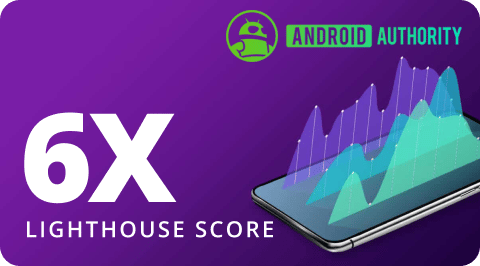SEO Best Practices for WordPress Web Designers
Search Engine Optimization (SEO) is arguably one of the most crucial aspects of your website. Web design and functionality are, of course, also important; however, if people can’t find your site, then all your hard design work and the hours, days, or weeks spent on site-building go to waste.
Good SEO practices aren’t hard to learn, but they aren’t easy to master. This article is geared to help any WordPress user succeed with SEO best practices that will help develop their site and skills.

SEO Best Practices
- Use Force HTTPS and a good search and replace plugin
- Keep your site up-to-date
- Use a Content Delivery Network (CDN)
- Find a reliable image optimization plugin
- Know where your robots.txt file is and how to edit it
- Follow content guidelines
- Watch URL length
Use Force HTTPS and a Quality Search and Replace Plugin
The security of your website is crucial. Using HTTPS not only builds trust by ensuring that consumer data is secure but also encrypts website traffic. As a confirmed ranking factor, HTTPS contributes to better visibility on Google. Google advocates for a “fully secure web,” and its ongoing page experience updates emphasize the importance of full HTTPS implementation.
Websites without HTTPS risk lower rankings as this factor becomes increasingly significant.
Implementing HTTPS in WordPress is straightforward. While plugins like Better Search Replace can convert HTTP links to HTTPS in your database, ensuring that all content securely loads over HTTPS is crucial, tools like Why No Padlock can help identify elements that fail to load securely, assisting in troubleshooting potential issues.
At WP Engine, enabling HTTPS is made even easier. In addition to providing a free SSL certificate for your domain, our platform offers a ‘Force HTTPS’ option (without the need for an additional plugin). Once you activate this and your SSL certificate is recognized, your site will automatically secure all connections.
This not only bolsters your site’s security but also supports SEO efforts by adhering to Google’s guidelines for a secure web.
Keep Your Site Up to Date
In recent years, there have been a few major plugins (both paid and free) that have presented nasty vulnerabilities. As a result, sites have experienced everything from remote code injections, malicious ads, and redirects to malicious domains, not to mention the myriad of other attacks these vulnerabilities can also present.

Unfortunately, these types of attacks can affect your Search Engine Results Page (SERP) rankings. That said, numerous attacks related to plugin vulnerabilities can be mitigated by simply keeping your WordPress core software, plugins, and themes up to date.
WP Engine can also help here, with Smart Plugin Manager, an ingenious tool that provides automated WordPress plugin and theme updates (including auto-rollback) to keep your sites secure.
Keeping your site(s) up to date can drastically reduce your exposure to vulnerabilities, and up-to-date sites generally perform better—a win-win for SEO as faster sites tend to rank higher on SERPs.
Use a Content Delivery Network (CDN)

A Content Delivery Network (CDN) speeds up page loads for your site’s visitors, ensuring that your visitors have the quickest experience.
Using a good CDN and image optimization plugins help keep your media responsive and served as quickly as possible. Cloudflare is a great starting point for a CDN, and they also offer a host of other neat offerings, like DDOS protection and DNS masking.
If you’re a new WP Engine customer, you’ll automatically get Cloudflare as our CDN offering for our WordPress sites, for free! When your users hit your site, they receive those files from the server that is geographically closest to them, which decreases load time, improves performance, and ensures all users have the same high-quality digital experience (no matter where they’re located)!
Find a Reliable Image Optimization Plugin
In the WordPress plugin directory, you can search for optimization plugins to help optimize image sizes. WP Rocket is a great tool to help with overall site performance, but it does cost money. From my experience, Smush and Autoptimize are great starter offerings to optimize sites, minimize your stylesheets, and help improve site performance. These are not 100% foolproof solutions, but they will keep your site optimized if used right, and don’t forget—Google loves fast sites!
Know Where Your Robots.txt File is and How to Edit It
Your robots.txt file is the core of your site’s ability to be readable by search engines. It’s the text file that tells web crawlers and robots what pages they can and cannot crawl.
The ability for Google to read this file and understand what permissions it has as it sends requests to the web server for your site data is pivotal to your site’s ability to be indexed through Google. Having a basic or non-existent robots.txt can often mean lower rankings, as Google will try to index pages it shouldn’t (if you don’t want it to), or may struggle with permissions to index pages it should. You can find your robots.txt file in the root directory of your website (often under the /www directory).
I recommend this great guide on a visual overview of robots.txt here at Varvy. It’s an excellent resource for an overview on the different types of commands you can alter in your robots.txt file!
Follow Content Guidelines
This (arguably) may be the core SEO tenant, and it all relates to content. Write and post the highest quality content you can possibly create. Why? Google favors articles that link back to other pieces of content you have written (a process known as internal linking), where images have the right information and tags associated with them (so Google can index their content better and faster), so the highest quality content is served on their search engine.

However, remember you are creating content for your client or customer and not for Google—a by-product of great content is an SEO boost, but it is always nice to know that the better your content, the higher potential you have for better ranking.
Another great content guideline would be to name all images you upload to the site and add a description. This primarily helps with content indexing for Google and is great for search SEO with Google images. Yoast SEO has a great guide on image SEO and how it works from optimization, to correct alt & title naming, and even site maps. It’s a great contextual read for those who want to start doing some more advanced steps to better understand the finer minutia of SEO for their site
The last content guideline is to make sure you watch your sentence length. The hardest thing to do if you’re on a roll is to edit and condense what you are saying in a blog post or a recipe or any kind of long-form content on a site. However, poor sentence structure is the bane of the user’s existence, and remember—good SEO considers good user experience, which relates back to how your user experiences the site. Keep your sentences concise, and to the point, and avoid waffling.
Watch URL Length
Another great tip for your site’s ranking health (as well as a good quality of life tip!), is to watch the length of your page URLs.
Users do not like long page names, and sharing links with super long URLs doesn’t have a huge impact on Google’s ability to crawl and index the URL. However, remember that you are making content for your users, and long domains can be cumbersome for users and harder to read, especially for subpages with longer titles. We recommend reading this article from Neil Patel on URL optimization.
Conclusion
Using some of these skills combined with any good practices you have already developed, should hopefully set you up for some better site optimization in the months ahead! Remember that WP Engine has 24/7 support and our friendly agents are available for our customers to help walk you through things like HTTPS, mixed content issues, and malware cleanup if you need a hand with those!












